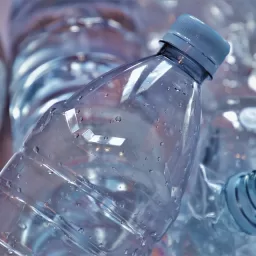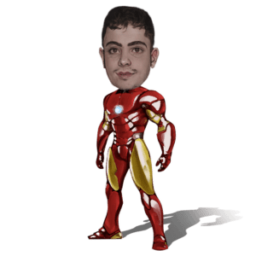Search engine optimization is the process of choosing targeted keyword phrases related to a website, and ensuring that the website places well when those keyword phrases are part of a Web search.
On-Page optimization factors:
The Major Factors Are:
Meta Tags, Header Tags, Text-body tag and Alt image tags:
1- Meta Tags:
Meta Tags are code in your HTML that is invisible to the visitors of your web site but are read by some web spiders and search engines.
Meta tags used by a large percentage of the top search engines as one of the main guidelines on how they will index your site
The Main Meta Tags are:
o Title Tag
o Description Tag
o Keyword Tag
Targeting the right keywords:
Do keyword research- it is very important in building traffic
To do your keyword research visit this website http://inventory.overture.com/d/searchinventory/suggestion/
Select a short list of 3 to 4 keywords
Title tag:
The page title should include ONLY your main keywords. The least amount of words you can place in the title, the more weight Google will give to each of the keywords and the higher you will rank.
The title is the most important piece of information search engines use to index Web pages. Include the title of your page and 3-5 important keywords. Format your site title as follows:
Site title, keyword1, keyword2, keyword3
You may use your URL, or the name of your company as your site title.
o Make sure it specifically describes your product or service,
o Makes proper use of 3 or 4 keywords,
o Use between 10 and 80 characters long.
Tips:
o Taken out all of the “ands”
o Replaced one of the “ands” with a “|” character
o Always Combine Your Keywords In The Page Title
Description Tag:
The Meta description tag describes your site’s content, giving search engines’ spiders an accurate summary filled with multiple keywords.
o Use a descriptive paragraph or sentence that is relevant to your page.
o If possible, use a sentence or paragraph that is present in the content of your page
o Use up to 500 characters, including spaces.
Keyword Tag:
Use a list of keywords that are relevant to the content of your web page. Use your url as the first key word and separate the keywords with commas. Format the key words as follows:
http://www.myURL.com, keyword1, keyword2, keyword3, …..
Add 5-10 Keywords
o For best results a tag sized between 50 and 250 characters.
o Note that keywords should be separated with commas.
Free Meta Tag Analyzer:
This Meta tag analysis tool will help you analyze your web pages and
check for search engine compatibility.
http://www.hypergurl.com/form.html
More Sites for seo:
2- Header Tags:
Headers are used to break entries up into logical sections.
Add h1 header tags- (Place your most important keyword) it’s best to place your h1 header tag on the top left hand or top/middle portion of your page.
When Google reads a webpage, it views the text from the top left hand side of the page to the bottom right hand side of the page.
Add h2 header tags- (Place your 2nd most important keyword) should be placed somewhere towards the top half of your webpage.
3- Text – body tag:
The body element defines the documents’ body. It contains all the contents of the document (like text, images, colors, graphics, etc.).
o When writing the content, try to evenly sprinkle your main keywords throughout the copy. Don’t overdo it though.
o Try to mention each keyword in a natural way as you are writing
o Include at least one of the keywords per 1-2 paragraphs, depending on how large your page is.
o Make sure to mention your main keyword at the very top left and the very bottom right hand side of the webpage
o Bolding, italicizing and underlining…Once we’ve finished writing the copy, we should go through and bold, italicize, or underline some of the keywords only 1 time each, maximum.
o Any keyword must be used 4 times or more in your site’s HTML body. This is highly recommended for best ranking results.
o Avoid Excessive Keywords- No word to be used more than 30 times throughout the page.
4- Alt image tags:
ALT tags are images’ descriptions.
o Place your keyword 1 in the alt image tag of the very top image in your webpage.
o Place your other 2 keywords plus an extra word like “picture” or “image in the alt image tag of 2 more graphics throughout your webpage.
Load Time Analysis:
If your Web site does not load in 12 seconds or less with a 56k connection, statistics show that about 45% of visitors will leave the site.
o Optimized you site for 56k modem users- Load time 12 second or less.
o Try to keep your homepage under 50k and your other pages under 40k.
Here’s a great free tool to help you check your website’s load time:
http://www.1-hit.com/all-in-one/tool.loading-time-checker.htm
Search Engine Guidelines:
Always remember this general rule when building your site: “Search engines do not like to be fooled”. Do not try to manipulate your listings through sneaky methods. Provide useful, relevant content, and you will never have to worry about search engine guideline violations.
o Hidden Text – you never hide text.
o Excessive Keywords-Use keywords naturally in sentences and paragraphs.
o No word to be used more than 30 times throughout the page.
o Repeated Keywords- No keywords to be repeated multiple times in a row. We recommend using keywords naturally in sentences and paragraphs.
o Doorway Pages- Doorway pages are discouraged by most search engines.
o Harmful Redirects- Redirecting pages have a hard time being indexed by search engines.
o Frame Issues- It is recommended for sites that use frames to implement a descriptive NOFRAMES tag with relevant text content.
o Macromedia Flash Issues- Don’t create all-Flash pages for any content you want to get indexed – instead, put that content in the HTML portion of the page.
Enjoy!
shopify
#Optimize #Website #Googles #Top #RankingMore #Steps
Post byBedewy for info askme VISIT GAHZLY





